DRESSED TO KILL (1980)











 Hello and welcome to the unofficial Brian De Palma website. Here is the latest news: |
|---|
E-mail
Geoffsongs@aol.com
-------------
Recent Headlines
a la Mod:
Listen to
Donaggio's full score
for Domino online
De Palma/Lehman
rapport at work
in Snakes
De Palma/Lehman
next novel is Terry
De Palma developing
Catch And Kill,
"a horror movie
based on real things
that have happened
in the news"
Supercut video
of De Palma's films
edited by Carl Rodrigue
Washington Post
review of Keesey book
-------------
Exclusive Passion
Interviews:
Brian De Palma
Karoline Herfurth
Leila Rozario
------------
------------
| « | September 2024 | » | ||||
| S | M | T | W | T | F | S |
| 1 | 2 | 3 | 4 | 5 | 6 | 7 |
| 8 | 9 | 10 | 11 | 12 | 13 | 14 |
| 15 | 16 | 17 | 18 | 19 | 20 | 21 |
| 22 | 23 | 24 | 25 | 26 | 27 | 28 |
| 29 | 30 | |||||
De Palma interviewed
in Paris 2002
De Palma discusses
The Black Dahlia 2006

Enthusiasms...
Alfred Hitchcock
The Master Of Suspense
Sergio Leone
and the Infield
Fly Rule
The Filmmaker Who
Came In From The Cold
Jim Emerson on
Greetings & Hi, Mom!
Scarface: Make Way
For The Bad Guy
Deborah Shelton
Official Web Site
Welcome to the
Offices of Death Records











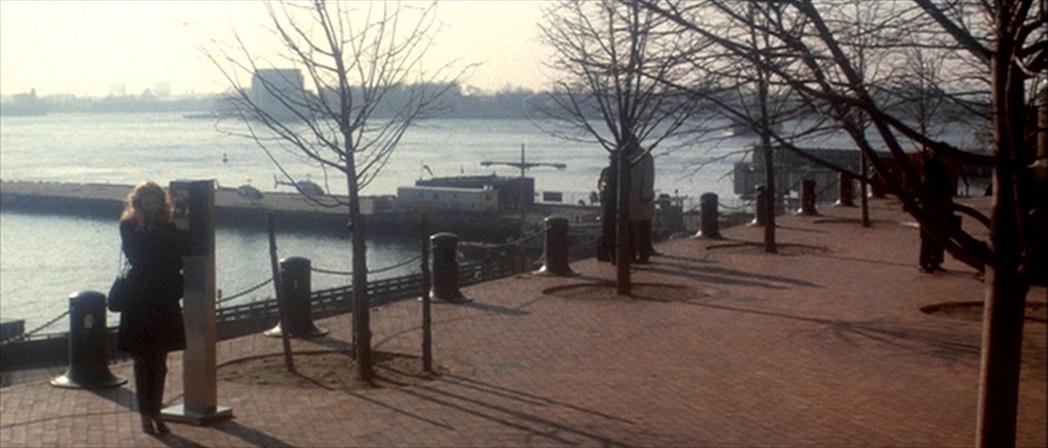






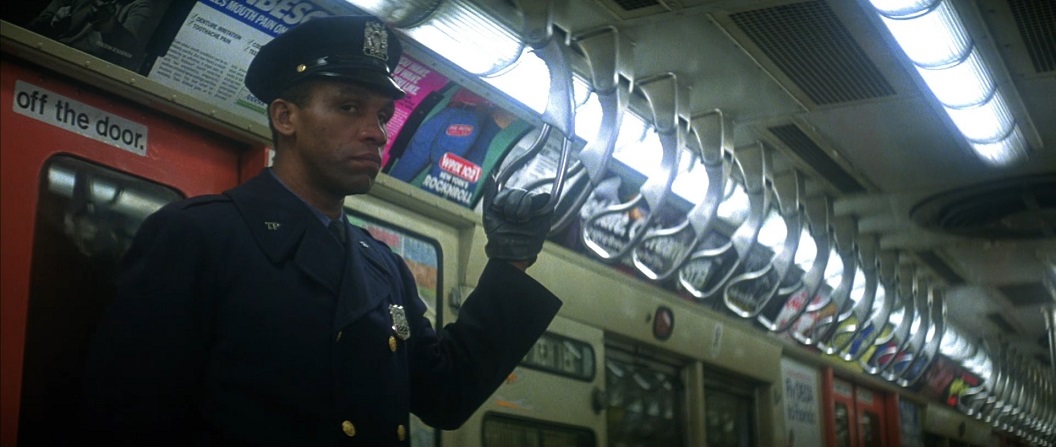
More from the Deadline obituary:
Born Samuel Arthur Williams on January 20, 1946, in Philadelphia, Williams was a prolific playwright, screenwriter, actor, and producer.Performing as Samm Williams, he got his start on the New York stage in the early 1970s, appearing in notable plays such as Black Jesus and, with the New York’s Negro Ensemble Company, Nowhere to Run, Nowhere to Hide and Liberty Calland. By the mid-’70s he began performing in other Off Broadway shows under the name Samm-Art Williams.
By the end of the decade, Williams had made his mark as a stage writer, and is today best known for Home, a drama originally staged by the Negro Ensemble Company in 1979 that moved to Broadway the following year. Home will be revived on Broadway beginning this June is a major Roundabout Theatre Company production directed by Kenny Leon.
The production begins previews May 17 at the Todd Haimes Theatre, opening on June 5.
Home is described by Roundabout as “a muscular and melodic coming-of-age story that gives voice to the unbreakable spirit of all Americans who have been searching for a place to belong.” The drama tells the story of Cephus Miles, a black Southern farmer thrown in jail for opposing the Vietnam draft and later moving North only to experience further difficulties before finally returning home.
The original Broadway production was nominated for the Best Play Tony Award and ran for 278 performances. Williams’ other stage credits include Welcome To Black River and Friends.
Williams also kept busy throughout the 1980s and ’90s writing for such TV shows as The New Mike Hammer, Cagney and Lacey, Badges, John Henry, Frank’s Place, Miami Vice, The Fresh Prince of Bel-Air, and Martin, among others. He received a 1985 Emmy nomination (Outstanding Writing in a Variety or Music Program) for Motown Returns to the Apollo (shared with fellow writers Buz Kohan and Peter Elbling).
As a producer, Williams was Emmy-nominated for Frank’s Place, and scored major TV hits with The Fresh Prince of Bel-Air, Hangin’ With Mr. Cooper, Martin and The Good News.
A recognizable actor, Williams made notable appearances in 1984’s Blood Simple and as the enslaved person Jim in a 1985 American Playhouse/PBS limited series production of The Adventures of Huckleberry Finn. Other acting credits include guest appearances in 227, Miami Vice, Frank’s Place, The Women of Brewster Place, The Fresh Prince of Bel-Air, A Rage In Harlem and Hangin’ With Mr. Cooper.
On the big screen, he made his debut The Wanderers (1979), and the following year played a subway police officer in director Brian De Palma’s Dressed to Kill.
Accolades include a Guggenheim Fellowship, The National Endowment for the Arts Fellowship for Playwriting, and other awards for writing. He was an Artist-in-Residence at North Carolina Central University, where he taught classes on equity theater and the art of playwriting.
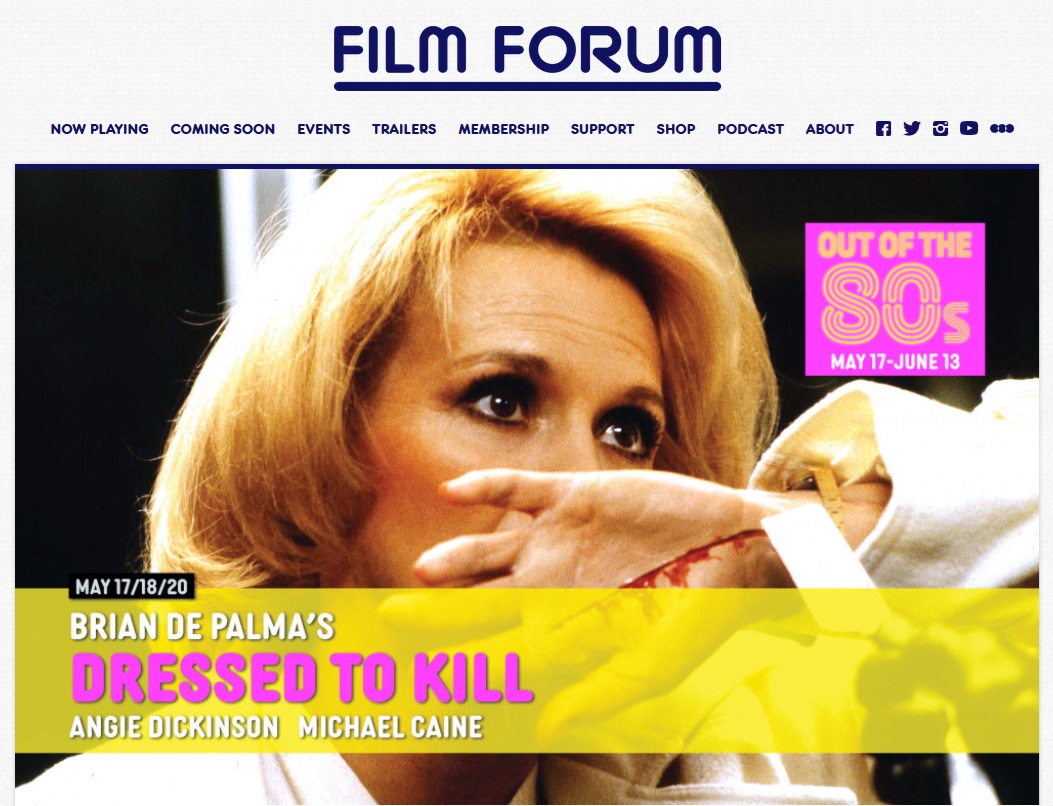
(Thanks to Hugh!)
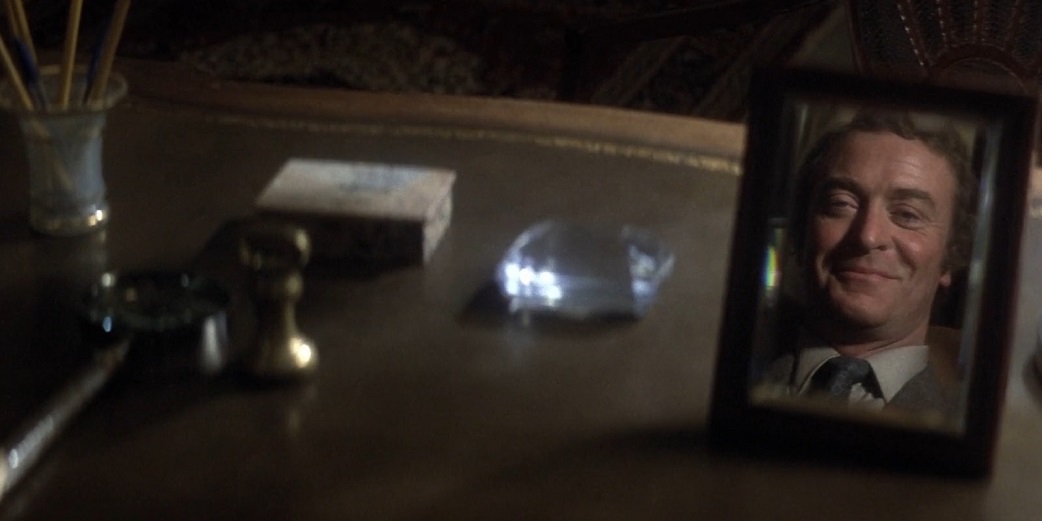
A caustically funny cosmic joke of a film about an insecure actor who finds a miracle cure for his facial disfigurement, only to be upstaged by a stranger who oozes self-confidence despite (still) having the exact same condition the main character had once allowed to hold him back, Aaron Schimberg’s ruthless and Escher-like “A Different Man” might have felt cruel if not for how cleverly it complicates its punchline.Are we supposed to be laughing at someone — someone who’s been treated like a monster for his entire adult life — just because they couldn’t resist the opportunity to shed their skin? Anyone familiar with Schimberg’s “Chained for Life,” which similarly defenestrated the notion of disabilities as “God’s mistakes,” already knows the answer to that question. Besides, who among us would pass up the chance to look like Sebastian Stan?
In that light, it’s more tempting to interpret “A Different Man” as a dark and damning satire of our social conditioning, which has convinced us to see asymmetry as ugliness, and internalize ugliness as inhuman. But while that might be a more accurate distillation of what Schimberg is doing here, leaving it there would fail to convey the full ambition of a deliriously surreal psycho-thriller that complicates its own identity at every turn. By refracting Brian De Palma’s self-reflexiveness and the Coen brothers’ mordant fatalism through the prism of his most personal obsessions, Schimberg creates a house of mirrors so brilliant and complex that it becomes impossible to match any of his characters to their own reflections, and absolutely useless to reduce the movie around them to the stuff of moral instruction.
If “A Different Man” starts by preying upon the same kind of pity that backstopped the likes of “Wonder,” “Freaks,” “The Elephant Man,” and any number of other films about how atypical-looking people have feelings too, it almost immediately begins weaponizing that pity against the audience — as an impediment to empathy, rather than a pathway to it. You will feel bad for Edward by the time this movie arrives at its perfect final line, but not for the reasons you think.
The movie’s first scene also makes us feel bad for Edward in similarly unexpected ways. Our concern isn’t focused on his neurofibromatosis (which has caused non-cancerous tumors to grow around the nerve tissue inside his face, swelling it in every direction at once), but rather that Edward’s condition has forced the wannabe actor to take a role in a Kaufman-esque PSA about the protocols of working with disfigured people. After all, the only real precedent for someone like him to succeed in the movies is probably “Under the Skin” breakout Adam Pearson (a dead ringer for Edward), though it’s unclear if that film exists in this film’s alternate-reality New York, a semi-heightened place which feels almost as blithely hellish as the nowhere city in “Beau Is Afraid.” The closest Edward can get to his dreams is performing an exaggerated version of himself in a project written by — and for the benefit of — the same people who make him scared to leave his dilapidated apartment. “Fear is a reaction,” someone insists. “Courage is a choice.”
Another instructive quote is waiting for Edward when he gets back home, as his greasy super reminds him that “All unhappiness in life comes from not accepting what it is” (words of wisdom that he attributes to Lady Gaga). So while Edward is delighted to find that a free-spirited Norwegian beauty named Ingrid (“The Worst Person in the World” star Renate Reinsve) has moved into the apartment next door, his instant crush is tempered by the reality of the situation — a reality that persists even after she invites him inside and intimately squeezes out the blackheads on his nose.
Maybe Ingrid, who has an endless rotation of strange men to choose from, simply doesn’t see Edward as a sexual being. Or maybe she develops feelings for him too, but denies them to herself because he’s not the kind of guy a woman like her “should” want. Or maybe the manic pixie dream girl energy that Edward projects onto her masks the fact that she’s a narcissistic sociopath who has no regard for other people’s feelings? It’s hard to see things clearly under so many layers of social coding, and Umberto Smerilli’s woozy, clarinet-driven score makes hard truths melt away like warm butter sliding off a knife.
It won’t be long before Edward’s face disassembles in similar fashion. A single trip to a De Palma-coded doctor’s office sets him up with an experimental pill that could reverse his condition, and — just a few days later — Mike Marino’s remarkably life-like makeup begins to peel off in clumps of raw flesh, revealing that Sebastian Stan has been hiding beneath Edward’s tumors the whole time.
Unsurprisingly, some things come pretty easy when you look like Captain America’s BFF. Bar bathroom blowjobs from people you’ve just met. A lucrative career in real estate. But “Guy” — as Edward creatively renames himself after faking his own death — can’t shake the feeling that something isn’t right. Why did the guy who used to live across the hall from him hang himself even though he had a hot girlfriend? When an ice cream truck had to drive on the sidewalk in order to squeeze past the ambulance that came to fetch the body, why did the whole scene feel like such a wickedly cutting metaphor for Edward’s entire future? And when Guy discovers that Ingrid has written an off-Broadway play about Edward’s life and eventual suicide, why can’t he stop himself from auditioning?
Some movies unfold in such a fun way that it can be easy for critics to indulge in the second-hand high of relaying their plots, but I promise that I haven’t spoiled anything beyond the basic setup to a film whose pleasures rely less on surprise than the satisfaction of watching something inevitable unravel into just the right shape.
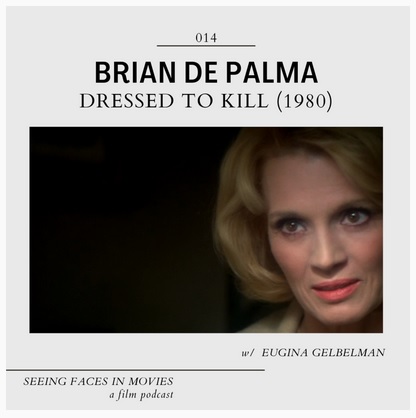
They chat about De Palma’s ability to elevate a B-Grade thriller to A-Grade material through his master craftmanship. His use of split screen and split diopter, and dialogue free scenes to show and not tell the audience the characters movements.They gush about De Palma being one of their all time favourite directors (Felicia’s top favourite director? Maybe, probably!), and how deliberately frames each scene, and how no one is able to pace a story like him.
Felicia: The tagline for Dressed To Kill is, “Every nightmare has a beginning – this one never ends.” That’s funny. It makes it sound like it’s an extreme slasher movie.Eugina: It does.
Felicia: I mean, technically, there are slasher elements, but it’s more of a cerebral thriller.
Eugina: As far as movies from that era go, it’s, like, slick. It’s very aesthetically pleasing, kind of. Not really like a grimy slasher film, it’s very polished and classy. Kind of a classy De Palma.
Felicia: Right? And I love you for that, because some people kind of describe him as “sleazy,” and I’m like, I don’t think he’s sleazy. He makes stuff that I think is in the back of everyone’s fantasies, and he’s just putting it out there. But it’s so beautiful to watch. His films are beautiful. They’re not sleazy, they’re not gross.
Eugina: No, it’s crafted very well.
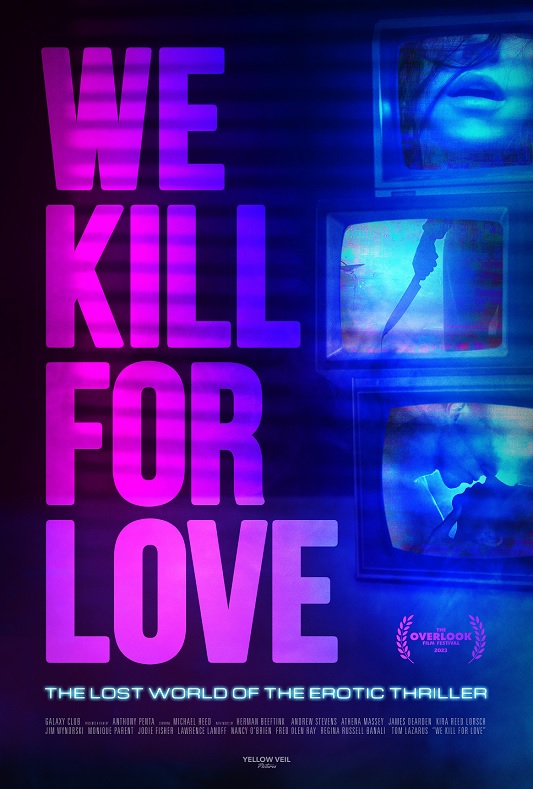
To explore its history, as Anthony Penta does here, is fraught with difficulties. Many films from the era are lost altogether; others survive only on decaying VHS tapes or the occasional laserdisc. In the latter days of the era they were piled high and sold cheap, so nobody thought of hanging onto them. Genre stars interviewed for the documentary reveal that even they find it difficult to remember individual films in the blur of similar material. Nevertheless, Penta does a decent job of tracking the progress of the genre and highlighting key titles whilst simultaneously exploring its origins.Erotic thrillers were very much a product of the emergence of home video. Before that, one watched what was on television, or went to a cinema, but there was little real choice. Making films was expensive so quality was important, making it difficult to experiment, especially with themes which were unlikely to attract support from arts funding bodies. Mainstream cinema offered romance; underground cinema offered pornography; and there was very little in between. Video, however, meant that suddenly there was a market for films which people could watch at home with no strangers present, and which, whilst delivering titillation, had enough story to escape the stigma of porn. Couples could watch them together. They could pretend they were doing so for the sake of the plot. Sometimes it was even true.
The roots of the genre, however, are deeper than that. Penta addresses the influence of film noir, with its dangerous, seductive femmes fatales and frequent murder plots. he also looks at the wider thriller genre, and particularly Hitchcock. (One cannot look at the architectural shots which open Paul Verhoeven’s Basic Instinct without thinking of Hitchcock.) This leads to reflection on Rebecca and the Gothic, with women in lacy nightgowns fleeing wealthy men with troubled pasts. Perhaps these origins go some way to explaining why erotic thrillers are such a peculiarly white phenomenon, with people of colour appearing only late in the game, and practically no mixed-race couples. The danger they involve is carefully packaged for middle class white American viewers and steers clear of the country’s deeper sexual anxieties.
The evolution of the genre would, inevitably, see new anxieties emerge. It provides an interesting mirror by way of which to reflect on US society during the early years of the AIDS epidemic. There’s a suggestion that it also addressed a developing crisis of masculinity, though the theories espoused here don’t go very deep, and there is some commentary on the development of feminism which is notable for its naivety, treating it as a unified school of thought. It is notable that the genre increasingly foregrounds women’s perspectives and portrays them as people who can be motivated by sexual desire, something which has become rarer in today’s cinema. This would be particularly plain in the Red Shoe Diaries series which emerged from the genre.
Penta positions Fatal Attraction as an ur-text for the genre, and takes the opportunity to discuss the issues with its ending, which was mangled by test audiences whose misogyny is perhaps easier for some viewers to appreciate from a distance. He also singles out Brian De Palma’s Dressed To Kill as a template for many films which followed it, and there are sufficient clips here for any viewer to recognise the repeated efforts to ape his camera angles. Then there’s 9 ½ Weeks, which gave the genre a shot in the arm at a stage when it was struggling. One might reflect that Kim Basinger is one of few women to have risen to stardom within this genre and gone on to build a successful career in more ‘respectable’ films.
The documentary rolls off the rails, though, when Penta veers into pretension. He creates a narrative with an actor playing “The Archivist,” a wholly unnecessary and distractingly bad device that disrupts the film’s momentum and seems especially bothersome given the film’s nearly three-hour running time. We see a man enter a room, discovering and watching old VHS tapes he’s studying, while a muted, haughty narration (provided by Penta) drones over him.“The Archivist” is supposedly a chronicler of erotic thrillers, but his presence is a purposeless extravagance whose subject matter is drenched in excess all its own. It’s an unwelcome flourish, and Penta’s accompanying narration is a self-aggrandizing excuse to attract attention to his pointless, flowery prose. Sure, it lovingly describes a genre whose main selling points are breasts and betrayal, but it’s maddeningly repetitive and smacks of self-importance. At one point, Penta repeats the phrase “Danger. Romance. Seduction” four times, each slower than the last. It’s meant to punctuate the notions but it’s a useless abstraction that elicits a larger sigh with each repetition.
Then we get to the presentation of the analysis itself, compiled from experts who speak insightfully and with authority. And while interviewees are discussing films like Double Indemnity, Rear Window and Vertigo in comparison to genre classics like Brian De Palma’s Dressed to Kill, Adrian Lyne’s Fatal Attraction and Paul Verhoeven’s Basic Instinct, we see clips of films like In the Heat of Passion, Lake Consequence and Sins of Desire. No offense to those films, but their incorporation of themes from those earlier films is where comparisons to such classics end; they are not as apples-to-apples as their more well-known and -respected cousins.
Penta also raises and drops some threads, including a timeline outlining the number of erotic thrillers made year to year. That timeline stops at 1994, which is presumably the peak, but is dropped and never returns.
The genesis of it all was Brian de Palma’s Dressed to Kill, which established just about all of the genre’s tropes and motifs. Lawrence Kasdan’s Body Heat was its Citizen Kane and Basic Instinct and Fatal Attraction were its Star Wars-sized hits. In between, there were a lot of cheaper films, promising, but not necessarily delivering naughty thrills, for customers of independent video stores and late-night cable TV.The phenomenon was well underway during the mid-to-late-1980s, but it maybe reached its peak in the early 1990s. Andrew Stevens is a major reason why. He leveraged his notoriety as an actor (from films like The Fury and Death Hunt) to get his screenplay produced. He also starred in Night Eyes, which is definitely one of the documentary’s touchstone films. To Stevens’ credit, he is a good interview subject, who can discuss his career with self-aware perspective and a sense of humor.
Occasionally, there is some horror crossover in We Kill for Love, mainly thanks to Fred Olen Rey. Penta and his academics (whose political commentary on the 1980s is often dubious) also convincingly identify straight-to-video erotic thrillers as the disreputable offspring of film noir and hardboiled pulp on the male side and gothic romance on female side. (However, class envy played little role in the genre’s success. The characters’ luxurious lifestyles were just a further dimension of its voyeurism.)
Indeed, voyeurism often factored very directly in the storylines, but they were not X-rated. They were “naughty” rather than “dirty” movies. Yet, many of the actresses who frequently appeared in these films have had to push back when they were unfairly labeled “porn stars,” like Amy Lindsay (whose credits also include guest shots on Star Trek: Voyager, Silk Stockings, and Pacific Blue), who explains what it was like to be smeared with the “p” word when she appeared as an average voter in a commercial for Ted Cruz. Give Penta credit for covering this incident fairly.
The erotic thriller was a staple in video stores in the 1990’s. The shelves of every Blockbuster Video store were filled with films like Night Eyes (1990) and Poison Ivy (1992). The genre owes its existence to a handful of classic thrillers like Brian De Palma’s Dressed to Kill (1980), the Michael Douglas-Glenn Close smash hit Fatal Attraction (1987) and the sexy crime procedural Basic Instinct (1992) starring Douglas and Sharon Stone.The new documentary We Kill for Love chronicles the rise of the erotic thriller during the birth of the home video era and its near-total disappearance in our age of streaming. Writer-director Anthony Penta tracked down hundreds of titles (many of which only exist on VHS) to complete his research into the subject. Penta has also compiled extensive on-camera interviews with the major stars of the era including Andrew Stevens, Kira Reed, Monique Parent, Amy Lindsay, Athena Massey, and Jodie Fisher.
The film examines how, despite the titillation and nudity, the erotic thrillers of this era were about female empowerment. In these films, women refused to be seen only as sex objects and took ownership of their lives. They weren’t waiting to be rescued by a man. They could face their enemies alone if they had to.
We Kill for Love is being distributed by Yellow Veil Pictures so fans should be guaranteed home video access to this excellent film about films. I’ll be buying the Bluray not simply to rewatch the documentary, but so I will always have access to the bibliography of films and written articles listed in the film’s final credits. Don’t be put off by its 163-minute runtime. The documentary explores so many facets of the erotic thriller genre that it never lags. It’s not simply an interesting history of a sub-genre of cinema. It’s also a fascinating sociological and cultural history of 1990’s America.
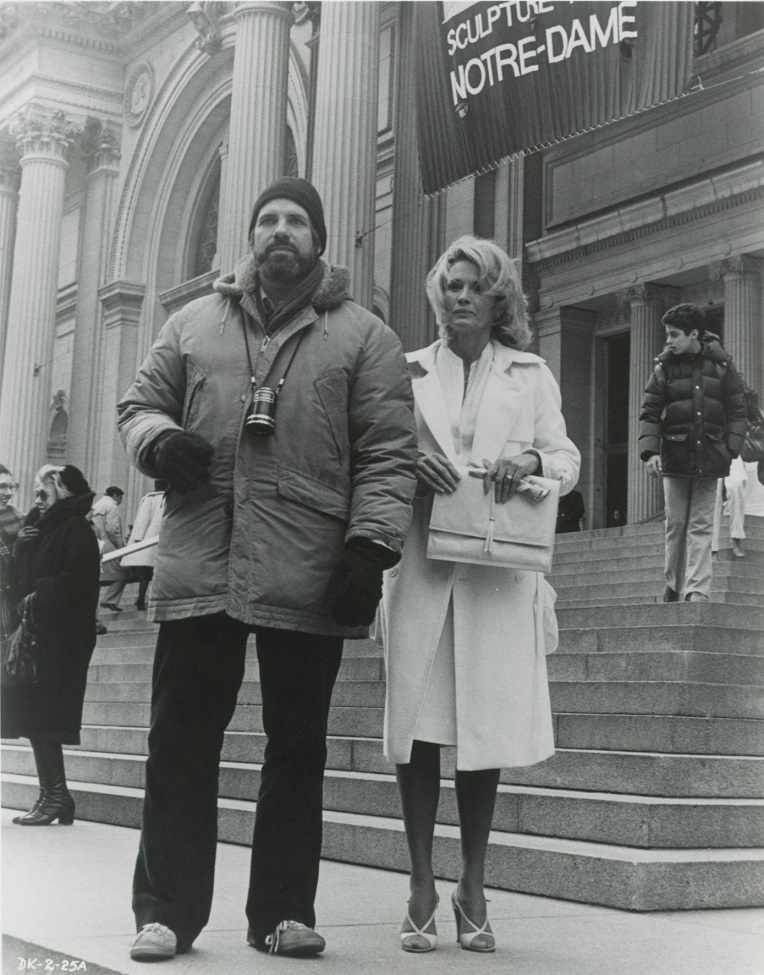
Are there other films from your career you’re especially proud of?I don’t know. “Rio Bravo” is one that just holds up no matter when. “Dressed to Kill,” I would like to have been in it just a little bit more before they knocked me off.
Audiences have embraced that film more in recent years. How was Brian De Palma to work with?
He was great and he [allowed] no fussiness. It was hard work because he was a very serious filmmaker, and then he took on serious subjects, so you have to do it that way. But he was a master director — oh, my God.
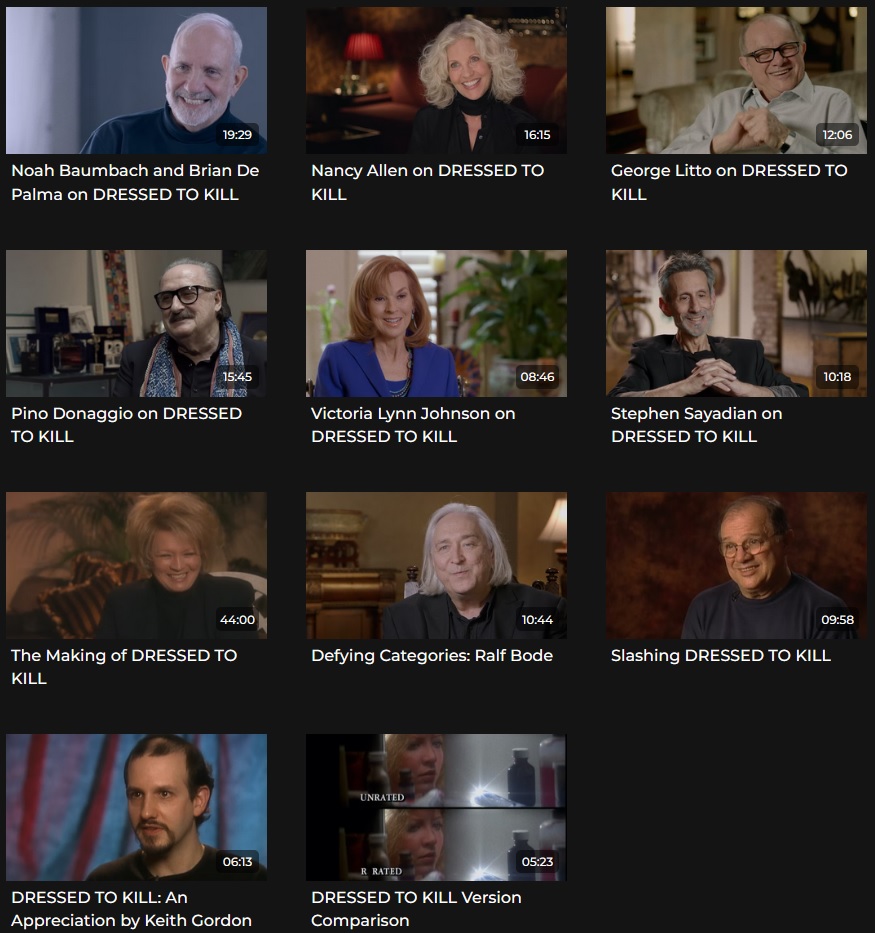
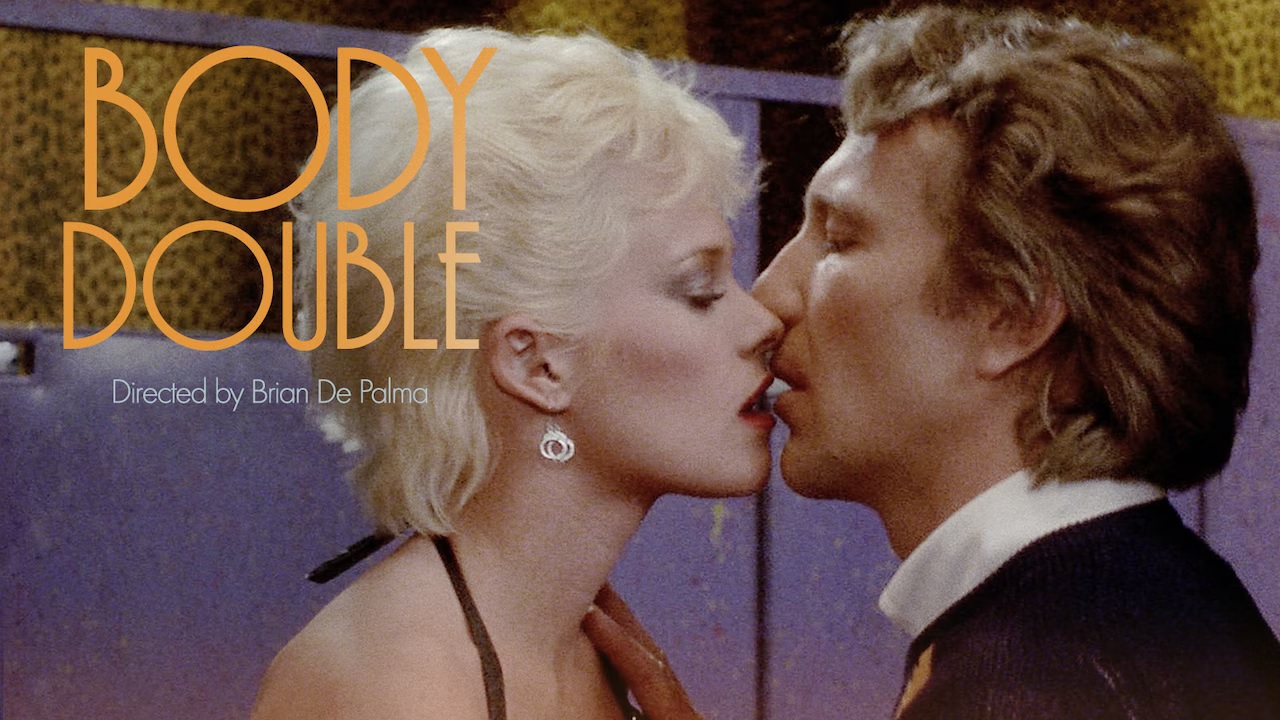

This is a particularly difficult title to speak about, not just because of its content, but how it is worked into the narrative. Instead of spoiling the screening, I’d rather keep my criticism short. However, one should note it is among the most brazenly transphobic narratives in the history of cinema, and its inclusion in this season is primarily to emphasise this point. It cannot be excused, but also cannot be ignored for what it is.
As a fan of De Palma and a trans woman, I’ve always struggled with this film. Over the years, a different portrait of the trans killer Bobbi began to emerge; each new viewing led me to believe there’s more empathy towards her than other critical readings have suggested.The film has some pop psychology gobbledygook about two sexes inhabiting the same body – that both Dr. Elliott and Bobbi, the trans woman, wanted control, and Dr. Elliot barred Bobbi’s transition. Liz asks Bobbi’s gender psychiatrist, Dr. Levy, about this: “You mean when Elliot got turned on, Bobbi took over?” Levy responds, “Yes, it was like Bobbi’s red alert. Elliot’s penis became erect and Bobbi took control, trying to kill anyone that made Elliot masculinely sexual.”
In the 1960s and 1970s, it was much harder for trans people to be able to transition in America. One would have to fit a very narrow criteria to be approved for the process. The Harry Benjamin International Gender Dysphoria Association, long one of America’s primary trans gatekeeping associations, described it this way in 2001:
During the 1960s and 1970s, clinicians used the term true transsexual. The true transsexual was thought to be a person with a characteristic path of atypical gender identity development that predicted an improved life from a treatment sequence that culminated in genital surgery. True transsexuals were thought to have: 1) cross-gender identifications that were consistently expressed behaviorally in childhood, adolescence, and adulthood; 2) minimal or no sexual arousal to cross-dressing; and 3) no heterosexual interest, relative to their anatomic sex… Belief in the true transsexual concept for males dissipated when it was realized that such patients were rarely encountered, and that some of the original true transsexuals had falsified their histories to make their stories match the earliest theories about the disorder.
An argument can be made that Dr. Elliott, who would have been familiar with these gatekeeping guidelines, would have found it impossible that he could be trans. Most of his profession would have believed this, which could have caused him to try to squash these desires. In fact, Dr. Elliot represents the psychiatric field’s gatekeeping of trans people for not fitting a very narrow definition, which came from the doctor’s own biases over what makes someone a man or a woman.
Does this make Bobbi the secret hero of Dressed to Kill? Not really, as she is still committing murder. To some extent, she represents the way marginalized communities can sometimes misdirect their anger towards other marginalized communities. It’s the patriarchal field of psychology that has prevented her from transitioning, but she instead focuses on the immediate problem: that when she sees attractive women she becomes aroused and this prevents her from reaching her goal of transition. Rather than blame the problem, she blames a symptom of the problem.
Did De Palma set out to hide all this subtext in Dressed to Kill? Probably not, but there are two things about De Palma that aren’t talked about enough. One is that the man does his research. He certainly did not set out to make a film about trans gatekeeping, but he seems to have done enough research to have been aware of its existence – and that impacted where his film went and how he dealt with the (admittedly loose) psychology in it. Without meaning to, he crafted a story that actually tells us important things about the way trans people were treated in the late ‘70s.
The second point is that De Palma, for all the talk of cruelty that surrounds his filmography, is ultimately an empathetic filmmaker.
Newer | Latest | Older